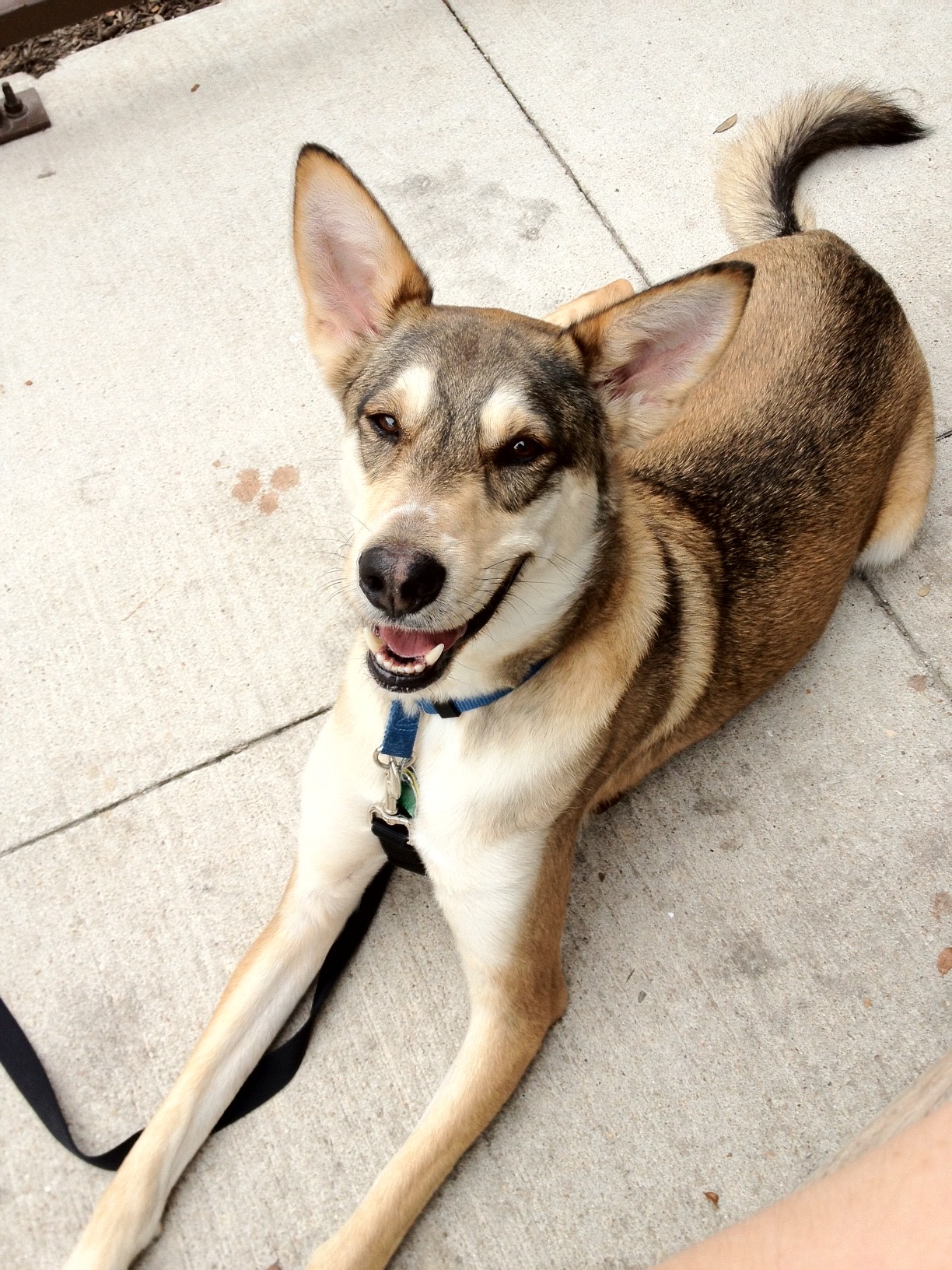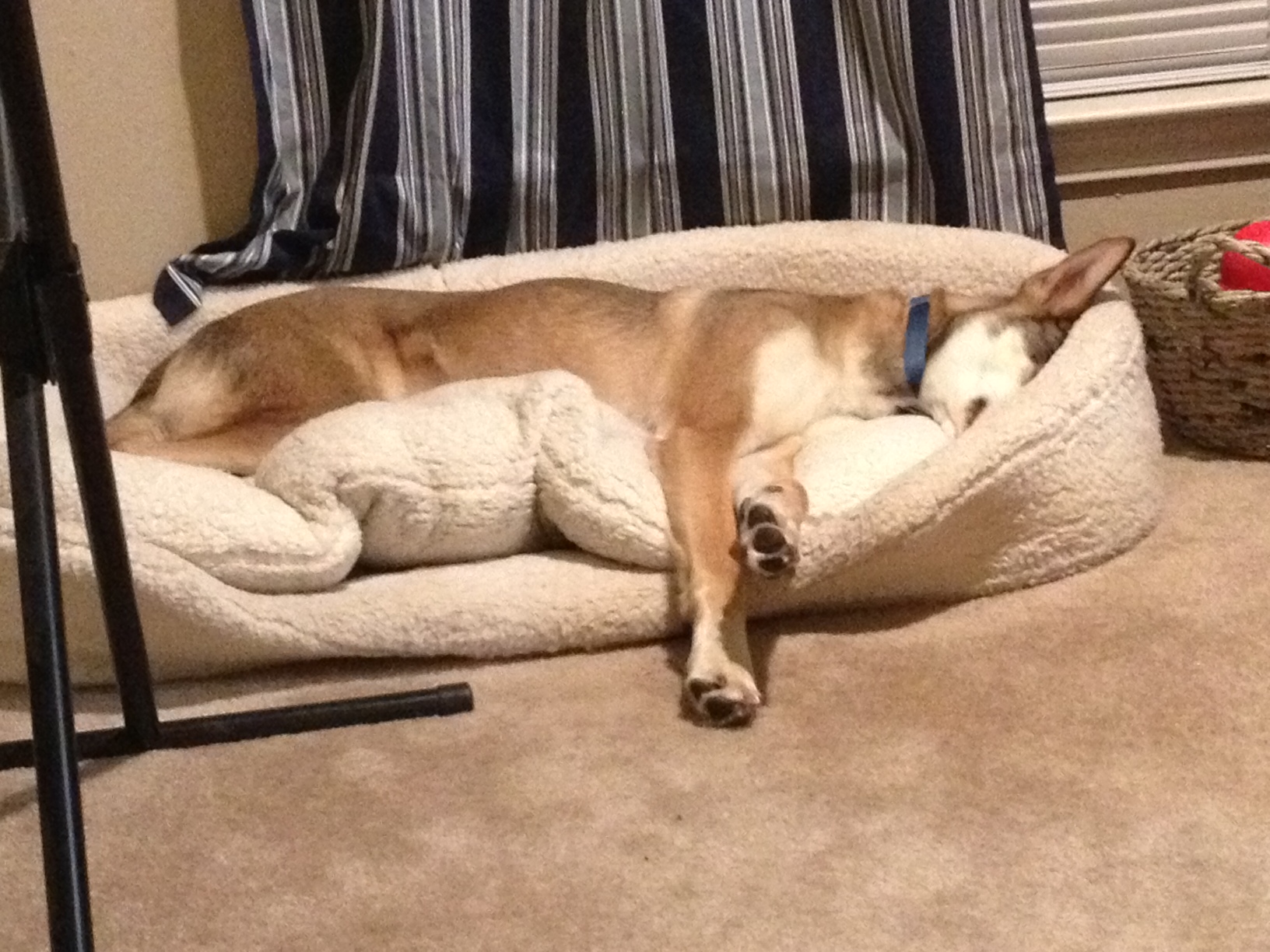
This weekend I am attending a two day seminar on dog behavior and training. Day one of the seminar they addressed A LOT! Nature vs Nurture, lots of body language, human body language, myths, dog-dog intros, and play styles. Of course, there is a lot to talk about (more than all day’s worth) all this so I will only comment on a couple of points that struck home with me.
1) Nerve Strength – I had never heard this term before but it made sense immediately. Nerve strength is a dog’s ability to recover and rebound in a stressful situation. How a dog responds to a completely new environment. Some dogs adjust very quickly to new situations – not to say it isn’t as stressful for them, but they just have better instinctual mechanisms to deal with high stress situations. I learned today that search and rescue trainers and service dog trainers both look for strong nerve strength in the dogs they choose to enter their programs. This is something important to consider when I think about adopting another dog. Despite Loker spending his first 3 years of life at a shelter, it wasn’t too detrimental because they keep it as “home-like” as possible. He was crated at night next to other dogs and was allowed to run around in a large pen during the day. He got to meet lots of dogs and people because of this. He gets nervous, but doesn’t get so overwhelmed that he stops listening to me. I think I got lucky that I got such a smart dog!
2) Calming, Distance Increasing, Distance Decreasing, and Stress Signals – There are too many examples to list! I have always observed dog behavior but never really without a true purpose or true skill and knowledge. In the videos we watched today, we were asked to watch one body part at a time (like just ears or just eyes). Micro-signals can be seen when you observe one body part at a time, but we also learned that it is not just one part that relays communication, but the “big picture”. You have to learn to look at everything at once – eyes, ears, mouth, tail, muscle tension, etc. It takes *really* good observation skills to catch all this at once so I will be practicing with videos that are available on sites like Youtube. I need to also learn to really watch Loker (hopefully he doesn’t catch me staring too much!). Just like you can get lazy when it comes to effectively communicating with relatives or spouses, I think you can get lazy when it comes to watching your dog’s behavior. Once you know him, you don’t feel the need to constantly watch him, but I think it is important to practice to tune your observation skills and make sure your dog hasn’t changed! (Maybe this is what happens when people say “my dog suddenly started….”, they don’t observe their own dogs as much as they might a new dog.
3) “Dominance is not a characteristic, it is a relationship” – People always talk about how this dog is dominant or that dog is submissive. This statement really resonated with me. Dogs who are dominant in one situation can be completely submissive in a different situation. It mostly depends on a dog’s stress level in that situation, what other dogs are around, and what people are around. I now see “alpha rollovers” and staring, among other “alpha” behaviors” to be non-sense behaviors from the handler that most certainly add stress as well as completely confuse the dog.
I could go on allllll day! Some other things I appreciated were: talks about early spaying/neutering, “punishment surpresses behavior, it does not CHANGE behavior,” detox time when rescuing a dog, stress isn’t always because of negative triggers and risky play behavior. Such good stuff and I can’t wait till tomorrow! 